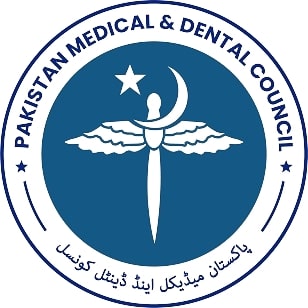DIAGNOSTIC ACCURACY OF CYTOCHEMISTRY TAKING FLOW CYTOMETERY AS GOLD STANDARD IN DIAGNOSING ACUTE LEUKEMIA
DOI:
https://doi.org/10.59058/jaimc.v22i1.238Keywords:
Cytochemistry, Sudan black B , Periodic Acid Schiff. stainsAbstract
Background & Objective: Acute leukemia are malignant neoplastic diseases that arise when the hematopoietic stemcells have malignant transformation into undifferentiated cells permanently. Flow cytometry is the gold standard to diagnose acute leukemia but it is available at few laboratories among private and public setups in Punjab and that too is very costly. Cytochemistry is an alternative and relatively cheap option which is available at most of the setups. So this study was planned with an aim to evaluate the diagnostic accuracy of cytochemistry using Sudan black B and Periodic Acid Schiff. stains, for acute leukemia diagnosis in a resource-constrained laboratories.
Methods: After meeting the inclusion criteria and taking appropriate ethical review board approval ,80 patient were enrolled in this cross sectional analytical study. Detailed history and physical examination with complete blood cells count and numerous hematological indices were obtained by using semi- automated analyzer; SYSMEX KX-21. Slides were made by using peripheral blood / bone marrow smears, fixed by methanol and stained for different cytochemical stains. Leukemia cell analysis was done by using the conventional immunofluorescence method by using the monoclonal antibodies directed against cMPO, CD2, CD5 , CD7 , CD 10 , CD11 c , CD 14 , CD 19 ,CD 20, CD33 , CD 34 , CD 45 , CD 64 , CD 79a, HLA-DR
, KAPPA, LAMBDA and TdT. The results of flow cytometry and cytochemistry were noted in a pre-designed proforma and results were entered in SPSS for analysis.
Results: The mean age of patients included in the study was calculated to be 39.40±14.76 years, and male to female ratio was 1.3:1. The sensitivity, specificity, positive predictive value (PPV), negative predictive value (NPV) and diagnostic accuracy of cytochemistry using SBB stain for diagnosis of acute leukemia was 91.94%, 100%, 100%, 78.26% & 93.75% respectively taking Flow cytometry as gold standard. Similarly, the sensitivity, specificity, PPV, NPV and diagnostic accuracy of cytochemistry using PAS stain for diagnosis of acute leukemia was 100%, 91.94%, 78.26%, 100% & 93.75% respectively taking flow cytometry as gold standard
Conclusion: According to this study, the cytochemistry using both SBB and PAF stains showed good accuracy for acute leukemia. Therefore, it may substitute Flow ctometry in many cases, in restricted resource settings.
Downloads
Published
How to Cite
Issue
Section
License
Copyright (c) 2024 Rabia Ahmad, Hira Arshad, Ayesha Khalid, Masuma Ghazanfar, Ahmad Saleem

This work is licensed under a Creative Commons Attribution 4.0 International License.
The articles published in this journal come under creative commons licence Attribution 4.0 International (CC BY 4.0) which allows to copy and redistribute the material in any medium or format Adapt — remix, transform, and build upon the material for any purpose, even commercially under following terms.
-
Attribution — You must give appropriate credit, provide a link to the license, and indicate if changes were made. You may do so in any reasonable manner, but not in any way that suggests the licensor endorses you or your use.
- No additional restrictions — You may not apply legal terms or technological measures that legally restrict others from doing anything the license permits.
The editorial board of the Journal strives hard for the authenticity and accuracy of the material published in the Journal. However, findings and statements are views of the authors and do not necessarily represent views of the Editorial Board. Many software like (Google Maps, Google Earth, Biorender (free version)) restricts the free distribution of materials prepared using these softwares. Therefore, authors are strongly advised to check the license/copyright information of the software used to prepare maps/images. In case of publication of copyright material, the correction will be published in one of the subsequent issues of the Journal, and the authors will bear the printing cost.










